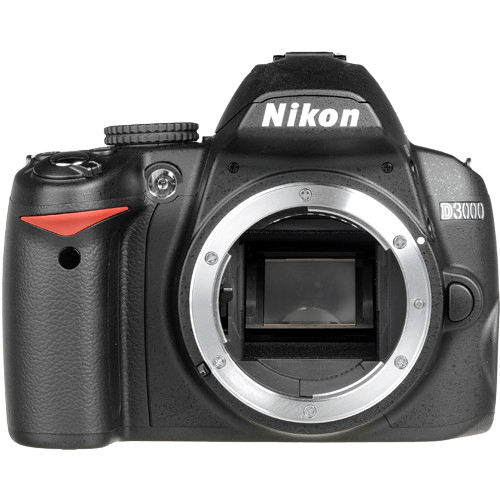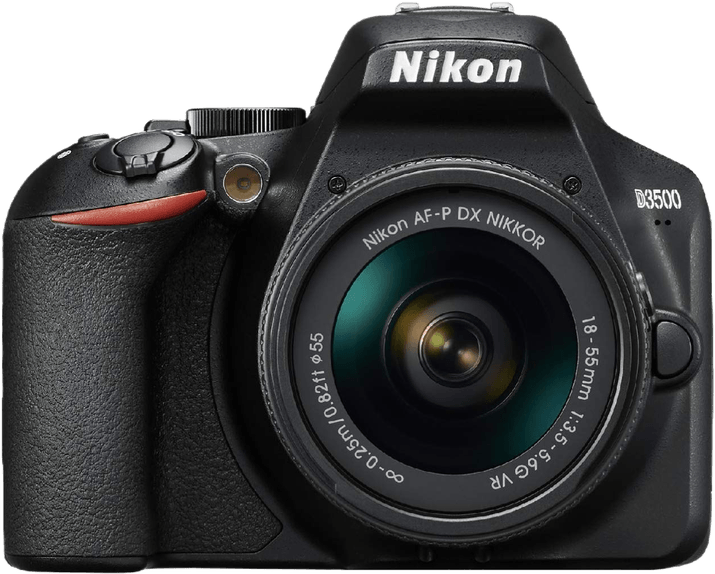Nikon D3000 vs D3500 Comparison
Nikon D3000

Nikon D3500

The Nikon D3500 emerges as the winner with a score of 61/100, while the Nikon D3000 trails behind with a score of 36/100. Both cameras are DSLR types and share similar dimensions, with the D3000 measuring 126 x 97 x 64mm and the D3500 at 124 x 97 x 70mm.
The D3500 outperforms the D3000 with its lower launch price of $499.95 compared to the D3000’s $730. Additionally, the D3500 was released in 2018, making it a more recent model with potentially updated features compared to the D3000, which was released in 2009.
However, the D3000 has a slight advantage in terms of weight, weighing 536g compared to the D3500’s 615g. This makes the D3000 a more lightweight option for photographers who prioritize portability.
Taking into account the specifications and scores, the Nikon D3500 is the better camera, offering more value for money and updated technology. The Nikon D3000 remains a viable lightweight option, but its lower score and older release date make it less appealing overall.
Nikon D3000 vs D3500 Overview and Optics
The Nikon D3500 emerges as the winner in the optics comparison, scoring 65/100, while the Nikon D3000 scores 43/100. Both cameras share some common specifications, such as the APS-C sensor size, Nikon F lens mount, and absence of image stabilization.
The D3500 has a clear advantage in terms of megapixels, boasting 24 compared to the D3000’s 12.3. This results in higher resolution images, allowing for more detail and better cropping flexibility. Additionally, the D3500 features a faster shooting speed of 5 frames per second, compared to the D3000’s 3 frames per second, making it more suitable for capturing fast-moving subjects. The D3500 also incorporates a CMOS sensor and an Expeed 4 processor, which contribute to its higher DXOMARK sensor score of 87, as opposed to the D3000’s CCD sensor and Expeed processor, resulting in a lower score of 62.
On the other hand, the Nikon D3000 has the Nikon F DX lens mount, which offers compatibility with a wide range of lenses. However, this advantage is not significant, as the Nikon D3500 also features the Nikon F lens mount, which is compatible with the same selection of lenses.
Taking all of these factors into account, it is clear that the Nikon D3500 is the superior camera in terms of optics. Its higher megapixel count, faster shooting speed, and better sensor and processor combination make it a more capable camera for capturing high-quality images. While the Nikon D3000 has the advantage of lens compatibility, this does not outweigh the benefits offered by the D3500’s improved technology and performance.
Nikon D3000 vs D3500 Video Performance
When comparing the Nikon D3000 and Nikon D3500 in terms of video capabilities, it is essential to mention that the Nikon D3000 does not have any video functionality. This marks a significant difference between the two cameras, as the Nikon D3500 does offer video recording features.
The Nikon D3500 has a video score of 56 out of 100. The camera provides Full HD video recording, with a maximum resolution of 1920×1080 pixels. This ensures that users can capture high-quality videos with their Nikon D3500. Furthermore, the camera supports a maximum video frame rate of 60 frames per second, enabling smooth and clear recordings. However, the Nikon D3500 does not have built-in time-lapse functionality, which may be a drawback for some users.
Taking these factors into account, it is clear that the Nikon D3500 is the superior choice for those who require video capabilities in their camera. The Nikon D3000, lacking any video functionality, cannot compete with the D3500 in this aspect. As a result, users who prioritize video recording should opt for the Nikon D3500 to meet their needs.
Nikon D3000 vs D3500 Features and Benefits
The Nikon D3500 emerges as the winner in the features comparison, scoring 54 out of 100 points, while the Nikon D3000 trails behind with a score of 23 out of 100 points. Both cameras share some common specifications, such as the 3-inch screen size and the lack of a touchscreen, flip screen, GPS, and WIFI. However, there are notable differences that set the D3500 apart from its competitor.
One significant advantage of the Nikon D3500 is its screen resolution, which is 921,600 dots compared to the D3000’s 230,000 dots. This higher resolution provides the D3500 with a clearer and sharper display, making it easier for photographers to review their shots and make necessary adjustments. Furthermore, the D3500 has Bluetooth connectivity, enabling users to transfer images to their devices quickly and efficiently.
On the other hand, the Nikon D3000 does not offer any significant advantages over the D3500. Both cameras lack essential features such as a touchscreen, flip screen, GPS, and WIFI, limiting their overall functionality and user experience.
Considering these points, the Nikon D3500 is the superior camera in terms of features. Its higher screen resolution and Bluetooth connectivity make it a more convenient and user-friendly option for photographers. The D3000, with its lower score and lack of standout features, falls short in comparison. The D3500 would be the recommended choice for those looking for a camera with better features and a more satisfying user experience.
Nikon D3000 vs D3500 Storage and Battery
The Nikon D3500 outperforms the Nikon D3000 in storage and battery, scoring 48/100 compared to the D3000’s 27/100. Both cameras share common specifications, such as having one memory card slot and lacking USB charging capabilities. However, the D3500 has a clear advantage in a few areas.
The Nikon D3500 accepts SD, SDHC, and SDXC memory cards, while the D3000 only accepts SD and SDHC cards. This allows for greater storage capacity and flexibility in the D3500. Additionally, the D3500 has a significantly longer battery life with 1550 shots per charge, compared to the D3000’s 500 shots. The D3500 utilizes the EN-EL14a battery, which is more efficient than the D3000’s EN-EL9a battery.
On the other hand, the Nikon D3000 does not have any notable advantages in storage and battery over the D3500. Therefore, the Nikon D3500 is the superior camera in terms of storage and battery performance, making it a better choice for photographers who require extended shooting capabilities and increased storage options.
Nikon D3000 vs D3500 – Our Verdict
Are you still undecided about which camera is right for you? Have a look at these popular comparisons that feature the Nikon D3000 or the Nikon D3500:

